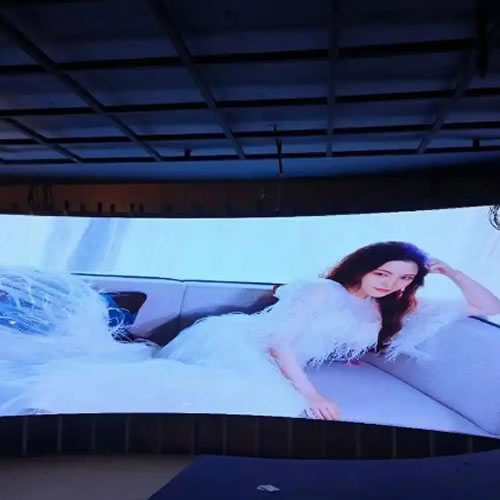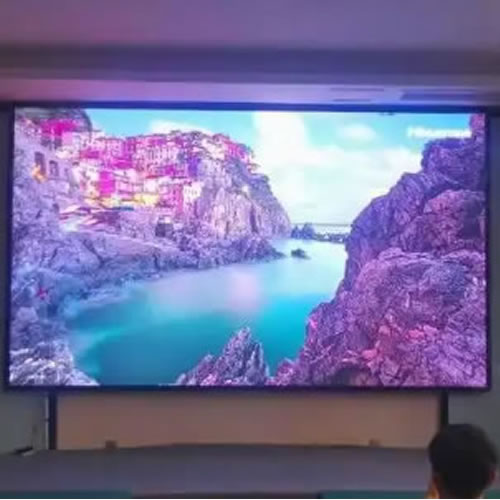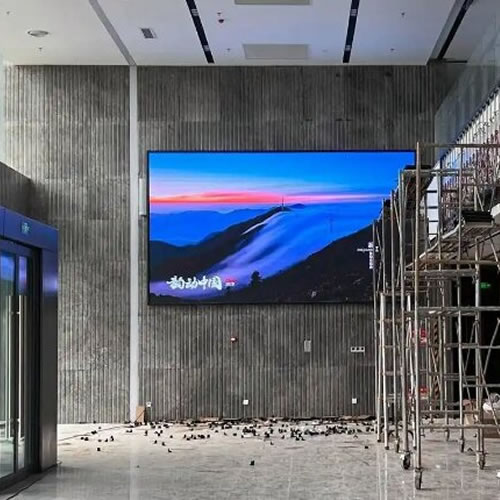What is meant by LED display?
What is an LED display?
An LED display, short for light-emitting diode display, is a screen that displays various information, including text, graphics, images, animations, market quotes, videos, and recordings, by controlling the display mode of semiconductor light-emitting diodes. Its core principle is to use light-emitting diodes (LEDs) as light-emitting units, which are driven by current to emit light. Through sophisticated circuit control, the brightness, color, and other parameters of each pixel are adjusted, resulting in a rich and colorful visual experience.
Compared to traditional display devices, LED displays offer many significant advantages. First, their extremely high brightness allows for clear display even in direct sunlight outdoors, making them widely used in venues such as outdoor advertising and sports stadiums. Second, LED displays offer exceptional color reproduction, producing rich, vibrant, and lifelike colors, satisfying people’s pursuit of a high-quality visual experience. Furthermore, they feature wide viewing angles, fast response times, and long lifespans, making them adaptable to a variety of complex usage scenarios.
LED Display Classification
LED displays can be categorized into various types based on different classification criteria. Based on the application environment, they can be divided into indoor and outdoor LED displays. Indoor LED displays are typically used in conference rooms, exhibition halls, shopping malls, and other venues. Their smaller pixel pitch allows for detailed display, ideal for close viewing. Outdoor LED displays, on the other hand, are primarily used in outdoor locations like plazas, stadiums, and building exteriors. They offer higher brightness and a higher level of protection to withstand harsh environments.
Based on the color displayed, LED displays can be categorized as monochrome, dual-color, and full-color. Monochrome displays are primarily used to display simple information such as text and numbers, such as bank interest rate displays and train schedule displays at train stations. Dual-color displays can display text and graphics in two colors and are often used in venues with demanding display content. Full-color displays are capable of displaying a variety of rich colors and dynamic images, making them the most widely used type.
LED Display Types
Key Technologies of LED Displays
The outstanding performance of LED displays relies on the support of a series of key technologies. Among them, pixel pitch is a key factor influencing display quality. Pixel pitch refers to the distance between two adjacent pixels. The smaller the pixel pitch, the higher the resolution and the more detailed the display. With continuous technological advancements, pixel pitch continues to shrink, now enabling ultra-high-definition displays.
Driving technology is also a core technology for LED displays. Excellent driving technology ensures precise current control for each LED light-emitting unit, resulting in uniform brightness and accurate color display. Heat dissipation technology is also crucial. Since LED light-emitting units generate heat during operation, failure to dissipate heat effectively and promptly can affect the performance and lifespan of the display. Therefore, advanced heat dissipation technology is crucial for ensuring stable operation of LED displays.
LED Display Applications
LED displays have a wide range of applications. In the commercial sector, they are a valuable tool for advertising. Large outdoor LED advertising screens attract the attention of passersby, providing a highly effective promotional platform for businesses and brands. LED displays in shopping malls can display product information, promotions, and other information to guide consumers. In sports stadiums, LED displays can broadcast real-time game footage, scores, and player profiles, providing spectators with an immersive viewing experience.
LED displays play an irreplaceable role in stage performances. They can serve as stage backdrops, playing a variety of vibrant videos and animations to create a dreamy stage effect that complements the actors’ performances. In the transportation sector, LED displays are used to display road conditions, train and flight information, and more, providing convenience for people. They are also widely used in education, healthcare, security, and other fields.
Future Development Trends
With the continuous advancement of technology, LED display technology is also undergoing continuous innovation and development. In the future, LED displays will move towards higher resolution, lower energy consumption, and thinner, more portable displays. For example, the emergence of Micro LED technology is expected to further enhance display brightness, contrast, and color rendering while reducing energy consumption and costs. Furthermore, the development of flexible LED displays will bring new changes to the display industry. They can be bent, folded, and in various other forms, opening up new possibilities for product design and application.
At the same time, with the widespread adoption of technologies such as 5G and artificial intelligence, LED displays will be deeply integrated with these technologies, enabling smarter and more interactive applications. For example, 5G networks will enable remote real-time control and high-definition video transmission, while AI technologies will enable intelligent content generation and personalized recommendations.
In short, LED displays, as a technologically advanced display device, have become a pervasive part of our lives. It not only brings us a rich and colorful visual experience, but also promotes the development and progress of various fields. I believe that in the future, LED displays will continue to shine and add more excitement to our lives.
 LED display screen structure
LED display screen structure
 Common faults of LED display screen
Common faults of LED display screen
 Classification of LED display screens
Classification of LED display screens
